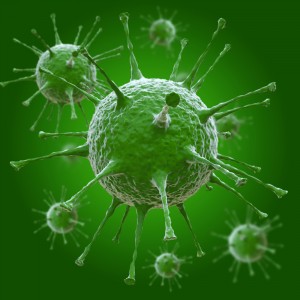 Research presented at the European Society for Medical Oncology (ESMO) Congress 2014, Madrid, Spain, has revealed that oncolytic viruses, such as specific common cold or herpes simplex viruses, can have beneficial effects when injected directly into melanoma lesions, destroying tumor cells and inducing systemic immune responses.
Research presented at the European Society for Medical Oncology (ESMO) Congress 2014, Madrid, Spain, has revealed that oncolytic viruses, such as specific common cold or herpes simplex viruses, can have beneficial effects when injected directly into melanoma lesions, destroying tumor cells and inducing systemic immune responses.
Results concerning a phase 2 study of Cavatak, a product that uses coxsackievirus A21 (CVA21), were presented by Robert Andtbacka, MD, from the Huntsman Cancer Institute at the University of Utah in Salt Lake City.
Additionally, Kevin Harrington, MD, professor of biological cancer therapies at the Institute of Cancer Research in London, United Kingdom, presented clinical data from the phase 3 trial for talimogene laherparepvec (T-VEC), Amgen’s cancer vaccine.
Oncolytic intralesional therapy, both injected and noninjected in lesions, can produce durable immune responses. Nonetheless its full potential is revealed upon combination with approved immunotherapies, such as ipilimumab and nivolumab.
Cavatak uses CVA21, a common cold RNA virus that targets ICAM-1, a protein upregulated in several types of cancer.
Previous research had already demonstrated the potent oncolytic activity of CVA21. Now, new clinical data presented at ESMO focused on the phase 2 CAVATAK clinical trial in Late-Stage Melanoma (CALM).
This trial enrolled 57 patients suffering from stage IIIC and IV melanoma who had one or more injectable dermal, cutaneous, subcutaneous, or lymph node lesions. Patients received 10 series of multi-intratumoral CVA21 injections, and immune-related progression-free survival, determined as the trial’s primary endpoint, was considered favorable, at 38.6%, with responses observed for both injected and noninjected lesions.
The objective response rate was achieved by 28.1% of patients, the median time to response was 2.8 months, and the 1-year survival rate was 73.3%.
“This study met its modest end point; immune-related progression-free survival was 22.5% at 24 weeks, and it clearly has clinical activity when injected locally,” Jeffrey S. Weber, MD, PhD, director of the Donald A. Adam Comprehensive Melanoma Research Center at the Moffitt Cancer Center in Tampa, Florida, who was not involved in the study, said in a Medscape news release.
Data from an extension of the phase 3 OPTiM trial, that compared intralesional T-VEC with subcutaneous granulocyte macrophage colony stimulating factor (GM-CSF), was also presented at the ESMO meeting.
T-VEC is a herpes simplex virus (HSV)-1-derived oncolytic immunotherapy that specifically replicates in tumors, producing GM-CSF and enhancing systemic antitumor immune responses.
Previous results had already demonstrated the efficiency of T-VEC in patients with unresected stage IIIB to IV melanoma, with this extension showing an improved overall response rate upon continued T-VEC treatment, but not GM-CSF treatment.
“These data suggest that if you need to continue dosing with T-VEC, even in patients who have relapsed, re-challenging them is safe and efficacious”, Dr. Harrington concluded.


